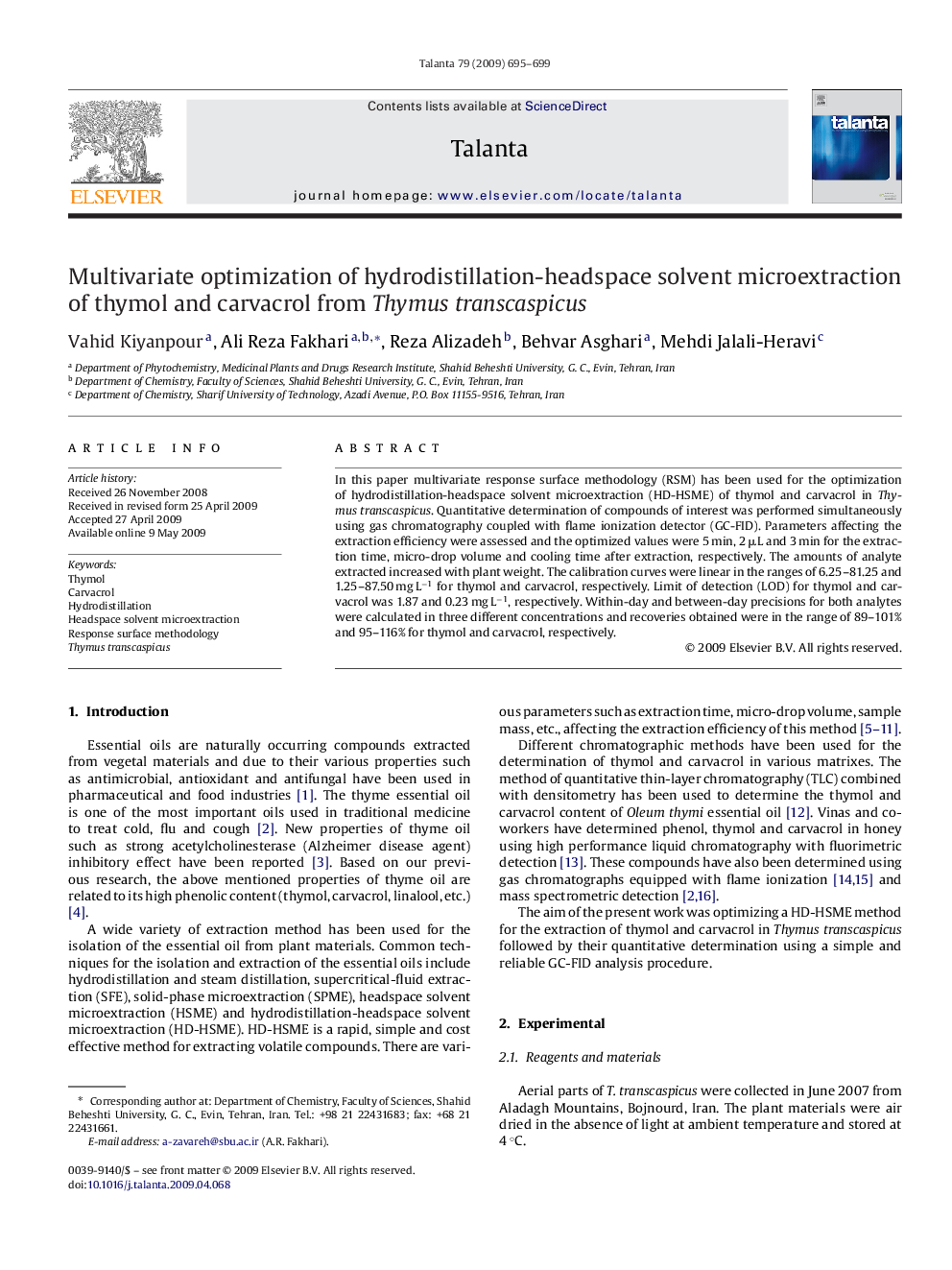| Article ID | Journal | Published Year | Pages | File Type |
|---|---|---|---|---|
| 10559620 | Talanta | 2009 | 5 Pages |
Abstract
In this paper multivariate response surface methodology (RSM) has been used for the optimization of hydrodistillation-headspace solvent microextraction (HD-HSME) of thymol and carvacrol in Thymus transcaspicus. Quantitative determination of compounds of interest was performed simultaneously using gas chromatography coupled with flame ionization detector (GC-FID). Parameters affecting the extraction efficiency were assessed and the optimized values were 5 min, 2 μL and 3 min for the extraction time, micro-drop volume and cooling time after extraction, respectively. The amounts of analyte extracted increased with plant weight. The calibration curves were linear in the ranges of 6.25-81.25 and 1.25-87.50 mg Lâ1 for thymol and carvacrol, respectively. Limit of detection (LOD) for thymol and carvacrol was 1.87 and 0.23 mg Lâ1, respectively. Within-day and between-day precisions for both analytes were calculated in three different concentrations and recoveries obtained were in the range of 89-101% and 95-116% for thymol and carvacrol, respectively.
Keywords
Related Topics
Physical Sciences and Engineering
Chemistry
Analytical Chemistry
Authors
Vahid Kiyanpour, Ali Reza Fakhari, Reza Alizadeh, Behvar Asghari, Mehdi Jalali-Heravi,
